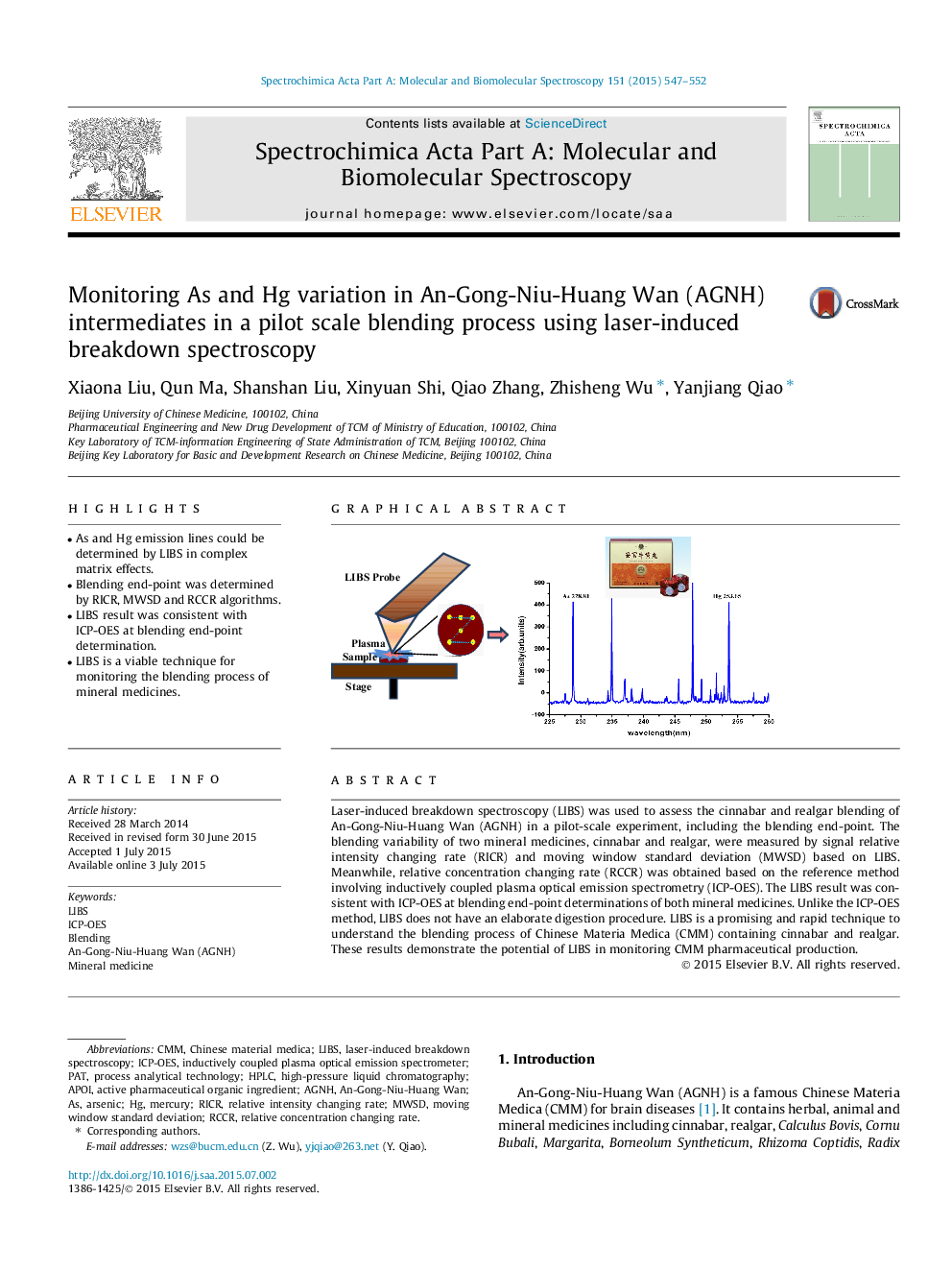| Article ID | Journal | Published Year | Pages | File Type |
|---|---|---|---|---|
| 1230114 | Spectrochimica Acta Part A: Molecular and Biomolecular Spectroscopy | 2015 | 6 Pages |
•As and Hg emission lines could be determined by LIBS in complex matrix effects.•Blending end-point was determined by RICR, MWSD and RCCR algorithms.•LIBS result was consistent with ICP-OES at blending end-point determination.•LIBS is a viable technique for monitoring the blending process of mineral medicines.
Laser-induced breakdown spectroscopy (LIBS) was used to assess the cinnabar and realgar blending of An-Gong-Niu-Huang Wan (AGNH) in a pilot-scale experiment, including the blending end-point. The blending variability of two mineral medicines, cinnabar and realgar, were measured by signal relative intensity changing rate (RICR) and moving window standard deviation (MWSD) based on LIBS. Meanwhile, relative concentration changing rate (RCCR) was obtained based on the reference method involving inductively coupled plasma optical emission spectrometry (ICP-OES). The LIBS result was consistent with ICP-OES at blending end-point determinations of both mineral medicines. Unlike the ICP-OES method, LIBS does not have an elaborate digestion procedure. LIBS is a promising and rapid technique to understand the blending process of Chinese Materia Medica (CMM) containing cinnabar and realgar. These results demonstrate the potential of LIBS in monitoring CMM pharmaceutical production.
Graphical abstractFigure optionsDownload full-size imageDownload as PowerPoint slide
